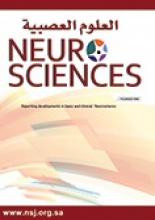Abstract
OBJECTIVE: To determine the effectiveness of 3-dimensional therapy in the treatment of adolescent idiopathic scoliosis.
METHODS: We carried out this study with 50 patients whose average age was 14.15 +/-1.69 years at the Physical Therapy and Rehabilitation School, Hacettepe University, Ankara, Turkey, from 1999 to 2004. We treated them as outpatients, 5 days a week, in a 4-hour program for the first 6 weeks. After that, they continued with the same program at home. We evaluated the Cobb angle, vital capacity and muscle strength of the patients before treatment, and after 6 weeks, 6 months and one year, and compared all the results.
RESULTS: The average Cobb angle, which was 26.10 degrees on average before treatment, was 23.45 degrees after 6 weeks, 19.25 degrees after 6 months and 17.85 degrees after one year (p<0.01). The vital capacities, which were on average 2795 ml before treatment, reached 2956 ml after 6 weeks, 3125 ml after 6 months and 3215 ml after one year (p<0.01). Similarly, according to the results of evaluations after 6 weeks, 6 months and one year, we observed an increase in muscle strength and recovery of the postural defects in all patients (p<0.01).
CONCLUSION: Schroth’s technique positively influenced the Cobb angle, vital capacity, strength and postural defects in outpatient adolescents.
- Copyright: © Neurosciences
Neurosciences is an Open Access journal and articles published are distributed under the terms of the Creative Commons Attribution-NonCommercial License (CC BY-NC). Readers may copy, distribute, and display the work for non-commercial purposes with the proper citation of the original work.






